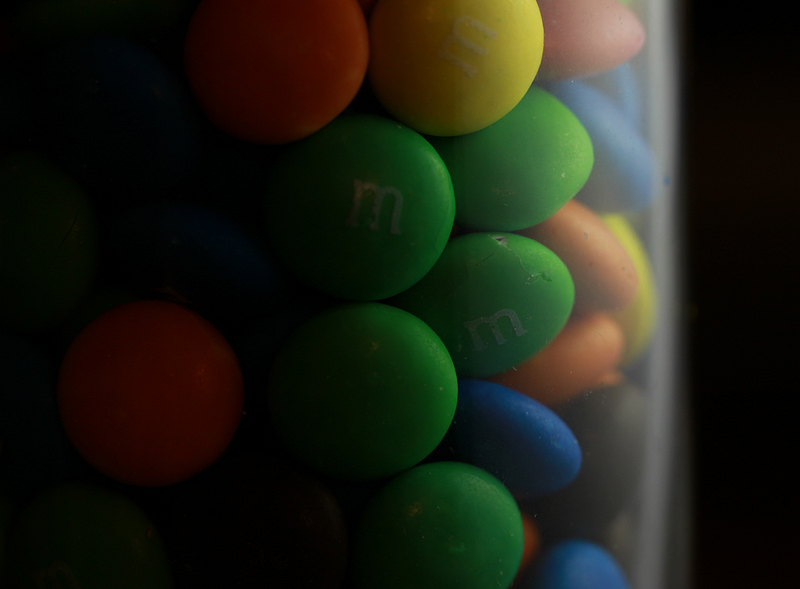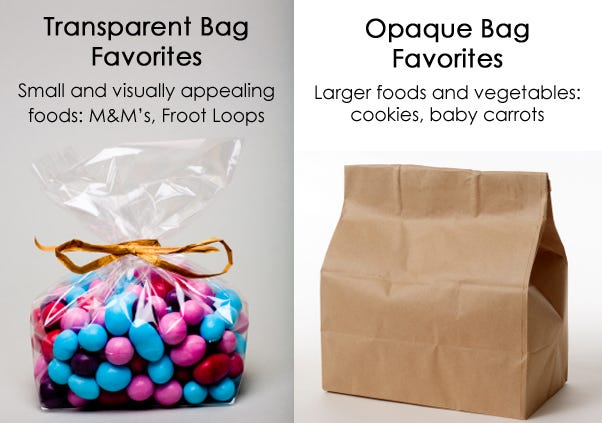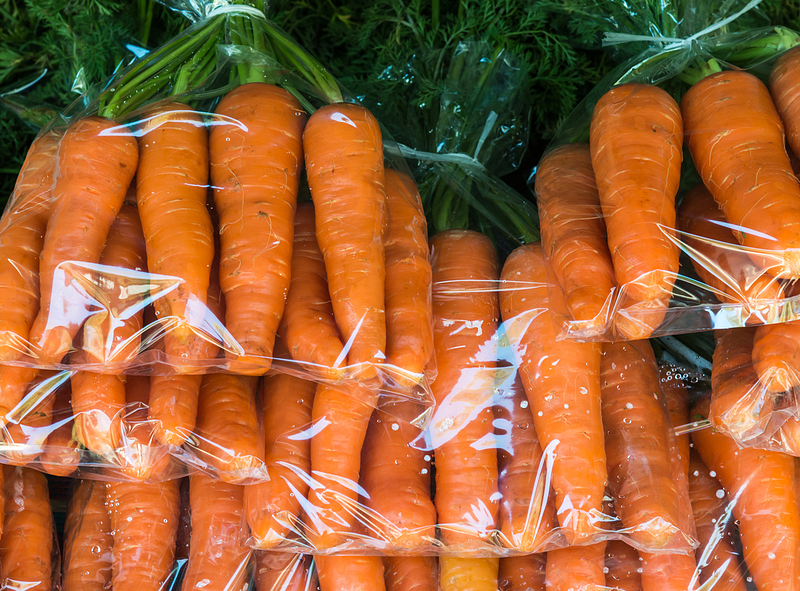The See-Food Diet: How Transparent Packaging Affects Eating Habits
Certain foods are more tempting when they come in clear packaging, while others are more popular when presented in paper bags
By Mark Henricks

You don’t have to consume a lot of business news to see transparency as an issue in the food industry. Whether the topic is pink slime in McDonald’s burgers, Whole Foods promising to label products with genetically modified ingredients, or IKEA recalling horsemeat-tainted meatballs, the bottom line is that people want to know what they’re eating, and they want to be able to see it.
Surprisingly little research has been done on transparent food packaging and its influences on consumers’ eating habits, including how much they eat. McCombs School of Business Marketing Professor Raji Srinivasan, with Xiaoyan Deng of Ohio State University’s Fisher College of Business, set out to remedy that by conducting a set of studies with common snack foods presented in both transparent and opaque packaging.
The study, which was described in a recent Journal of Marketing article, placed experimental subjects in a common snacking environment: in front of the television (where 70 percent of all snacks are consumed). Researchers told the subjects that they would be evaluating advertisements that ran during episodes of the popular sitcom “The Office.”
Participants were provided with snack foods including nuts, cookies, M&Ms, Cheerios and Froot Loops to munch on while they watched TV. Some foods were offered in transparent containers, while others were hidden behind opaque packaging.

Bag Habits
Of course, the focus of the study was actually on the food, not the commercials. Srinivasan had carefully weighed and counted each container’s contents before handing them out. When the “ad evaluation” was done, containers were collected and labeled with each subject’s identifying number.
Unlike previous research in this area, Srinivasan’s study measured actual consumption from the containers rather than simply asking subjects which foods they thought were more attractive.
“We actually measured behavior,” Srinivasan says. “We didn’t [just] get people’s attitudes.”
The researchers found that the transparency of food packaging influences snacking habits in different ways depending on the size, visual appeal and healthiness of the food it contains. And the project uncovered some counterintuitive results.
One intriguing finding was that participants ate smaller quantities of large, visually appealing snack foods (such as cookies) from transparent packages than they did from opaque ones.
On the flip side, researchers found that small foods like M&Ms were more appealing in clear packaging — participants ate 58 percent more of the candies from the transparent containers than they did from paper bags.

Srinivasan explains that see-through packaging can help snackers monitor their consumption of larger foods — something they can’t do as effectively with smaller snacks such as M&M candies, which are harder to count. This often prompts people to cut back on the amount of larger foods they eat.
Researchers also learned that food’s visual appeal can affect consumption differently depending on the transparency of the packaging. When subjects were able to see their cereal options, they gobbled more colorful Froot Loops than plainly colored Cheerios. But with opaque packaging, visual attractiveness had little overall effect on consumption.
The Veggie Problem
Finally, Srinivasan and her co-researcher examined what happened when healthy foods — in this case, baby carrots — were offered in transparent and opaque containers. The unexpected outcome: People ate fewer carrots from transparent packages than opaque ones.
“The health food results came as a shock,” Srinivasan says.
Past studies have shown that when people go shopping, they prefer to buy veggies in see-through containers (to ensure the freshness of the product). So why, then, would they rather reach for opaque containers when snack time comes around?
The researchers were stumped until they reached the stage of interviewing participants about their consumption choices during the experiment. The explanation is a factor Srinivasan describes as “visual turnoff.” Simply put, people regard health foods as low in taste and general appeal. So when they see the carrots, they eat fewer of them, even though they know the veggies are good for them.

Food for Thought
The findings have implications for ordinary consumers. Srinivasan suggests, for instance, that people who pack their own snacks or lunches could consider that putting the carrots in an opaque paper bag might encourage them to eat more of the healthy goods than if they were placed in a clear plastic bag.
But the largest impact could be on purveyors of packaged foods. Businesses spend more than $1 billion annually on advertising campaigns to encourage consumers to more rapidly consume products they have purchased, the researchers noted. Packaging, however, is a less expensive and, in some ways, more effective approach to affecting consumption.
For example, marketers would benefit from packaging small, visually appealing foods like M&Ms in clear bags, while presenting larger foods like cookies in paper bags.
The approach becomes trickier when there’s a disconnect between the qualities customers find appealing when they’re browsing the grocery store aisles and those that tempt them to eat the food once they’re back at home. For example, in the case of baby carrots, people want to be able to see the produce they’re about to buy, but they are actually less eager to eat vegetables that are presented in clear packaging.
So how can retailers resolve the contradiction? Srinivasan’s study recommends that marketers continue to use “traditional, transparent bulk packs to showcase the vegetables’ freshness at the point of purchase” but also attach a smaller, opaque pack to each large bag. This would allow customers to later repackage the carrots at home and eat them on the go.
“As consumers eat baby carrots directly from opaque packs across multiple occasions, they are likely to eat more,” the study notes.
Srinivasan says packaging can do things ads can’t when it comes to affecting purchasing behavior. “Most people make the decision on which item to buy in the store,” she says. “Packaging is your last chance to say, ‘Buy me!’”
Originally published at www.texasenterprise.utexas.edu on May 30, 2013.
About this Post
Share:


